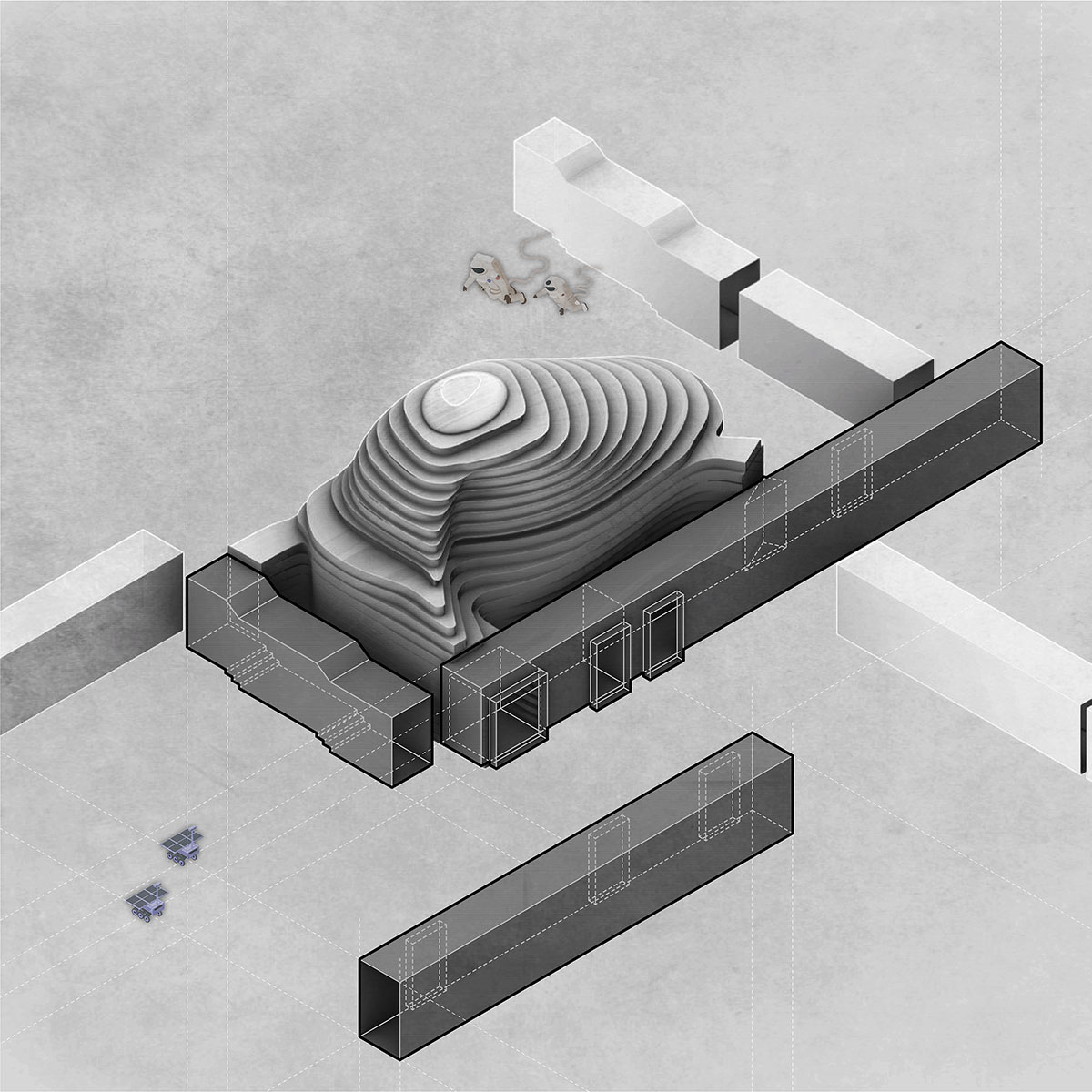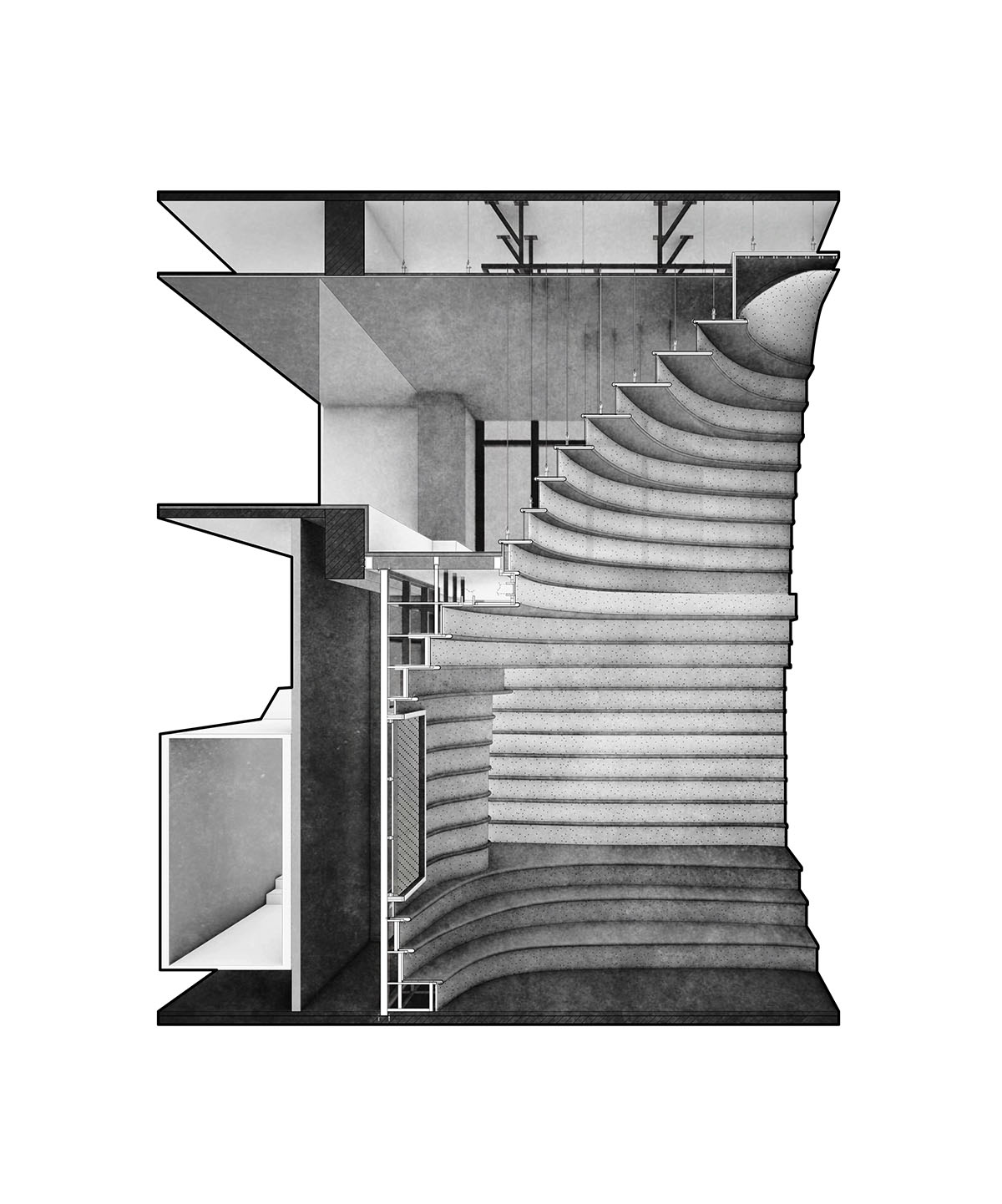Submitted by WA Contents
Sinuous elements and undulating surfaces form Golong Wormhole experimental space in Hangzhou
China Architecture News - May 11, 2022 - 14:40 4346 views
Beijing-based architecture and interior design firm PINES ARCH has designed an experimental space for events and exhibitions, which features sinuous elements and undulating surfaces with all-white backdrop.
The project, named 2022 Golong Wormhole, is located at the Golong Holdings headquarter building in Hangzhou, China.
The space, resembling a wormhole layered like with paper cuts, provides an alluring space for flexible programming.
The interior maintains a consistent visual language that represents the inquisitive and transformative brand culture of Golong, a beauty and wellness conglomerate.
The wormhole is situated on one side of a rectangular general layout. The wormhole itself acts like a sculptural work in the center.
While the first floor includes spacetime tunnels, display window, utility, control room, storage ad restroom, the second floor is dedicated to restroom, wormhole, meeting room, office space, pantry and multi-use space.
In Golong Wormhole, there are three interdependent and interconnected gallery spaces. The wormhole is conceived as an immersive space tying all galleries together, is the focal point of the exhibition.
"As the only part of the exhibition space that is not rectilinear, the sinuous elements extend and undulate from the foot of the shell-like installation to the very top, blurring the traditional definitions of what constitutes a room," said PINES ARCH.
"The space is imbued with motion and speed, possibly submerging some unseemly visitors in an uneasy sensation that challenges the known and unknown about wormholes in our galaxy."
The studio interprets a typical shape of wormhole as a sculpture that encompasses the viewer, enhancing their awareness and provoking their senses about light, form, and scale.
The space invites the visitor to be suspended in a reality in which the viewer takes on the role of an intrusive explorer, actively trying to measure and to interpret.
During events, the space can allow seats up to 60 people on the steps. On days without events, the wormhole is a space that employees would come to contemplate and unwind.
To construct the wormhole, the studio devised a structural frame made of galvanized steel studs that are welded on-site after the studio defined the layout precisely by projecting curves onto a grid.
Later, the studio used fiber-cement backerboard to line the frame, and installed precast GRC panels made specifically for each curvature.
"From a secondary steel frame bolted into the floor slab above, steel cables hang rings of molded GRC panels on the upper portion of the wormhole shell," the studio added.
"Frosted strips of bent acrylic is then slotted in between the suspended panels to create the translucent face panels."
On both ends of the central wormhole, the space features gallery spaces for agile programming needs.
Unlike the wormhole, the galleries act as an anchor to the familiar, layering the latent and the seemingly banal. The grid present in the coffered ceiling is symbolic of a shared consciousness.
It is measured and standardized, the existence of the grid is a calculated act of topography. The walls of the galleries are plastered by hand, whereas the floors are made of polished epoxy. The rotating partition in the west gallery is used to configure spatial divisions, creating changing boundaries based on programming needs and occasion.
The rotating partition is equipped with electrical sockets and a hidden water inlet to function as a bar or a coffee stand during events. The gallery spaces can be subdivided by automatic glass partitions that are hidden into a pocket wall. The pocket wall is built to be a half wall, so the coffered ceiling is allowed to extend beyond.
The interior space also include three freestanding tunnels that exist within the “in between” realms. These tunnels, which can be seen in the floor plans, separate the wormhole and the galleries, hovering slightly above ground.
According to the studio, "the tunnels act like conveyor belts, linearly transporting those who travel through it."
"It is as though one’s freewill is temporarily surrendered to their robotic forward movement."
"As the visitor wanders through the dark tunnel, the darkness heightens their awareness, stretching and distorting their perception of time and space," the studio added.
The studio added that "In 2022: Golong Wormhole, the spaces are intentionally created to "contain" a blank slate, in which any human presence or activity would colonize the spaces and create contexts of its own."

First and second floor plans

Section axonometric drawing

Section diagram
Video by SIDE VIEW, courtesy of PINES ARCH.
PINES ARCH was founded in 2019 by Shuni Wu and Evelyn Jingjie Wong as an international architects’ collective. The practice is constantly exploring the contexts presented by its zeitgeist, pursuing an ultimate mission to be concise, truthful and clear in its form of expression, interpreting and re-interpreting what it takes to make “Honest Architecture”.
As explained in the profile description, PINES ARCH understands as digital natives that much of everything will eventually be “ideal”, but amorphous.
Similar interior includes MVRDV-designed Tianjin Binhai Public Library featuring floor-to-ceiling cascaded bookshelves in the cultural centre of Binhai district in Tianjin, China, which opened in 2017.
Project facts
Project Name: 2022 Golong Wormhole
Project Location: Hangzhou
Client: Golong Holdings
Type: Exhibition
Design: PINES ARCH
Director: Evelyn Jingjie Wong, Shuni Wu
Design Team: Evelyn Jingjie Wong, Shuni Wu, Jiawen Song, Ninghui Wang
Building Area: 1000m²
Design Period: 2020.12-2021.04
Construction Period: 2021.07-2022.01
Main Materials: GRG / Hangzhou Haozhen Building Materials Co., LTD / Wall coating / Hangzhou Zhongtian Decoration Material Co., LTD / Epoxy floor / Hangzhou Chenyang Floor Technology Co., LTD.
All images © BreezeImage-Guozhe
All drawings © PINES ARCH
> via PINES ARCH
